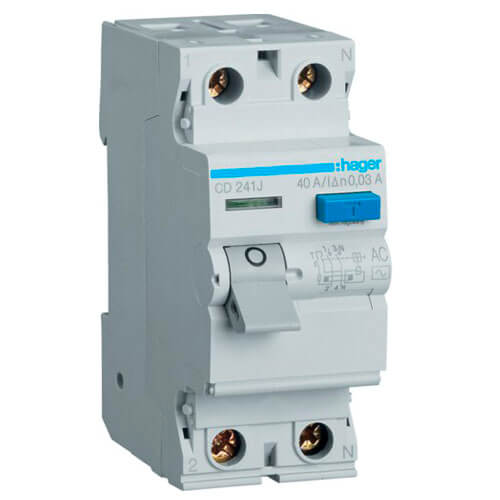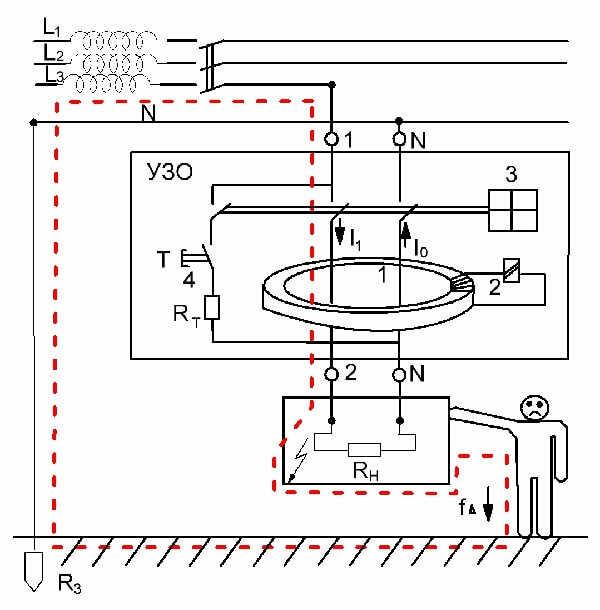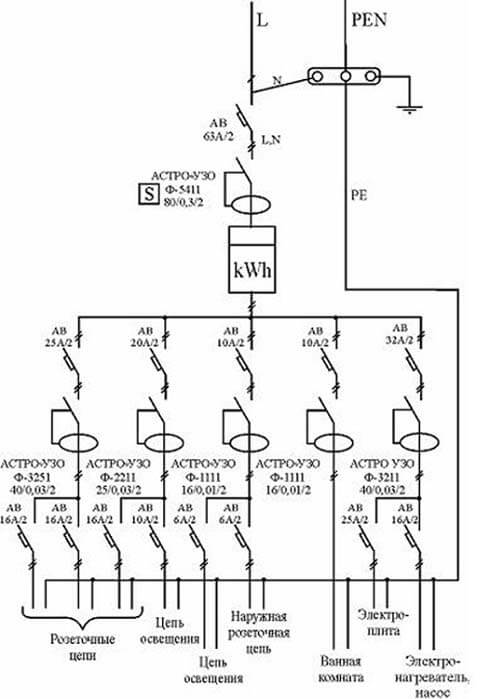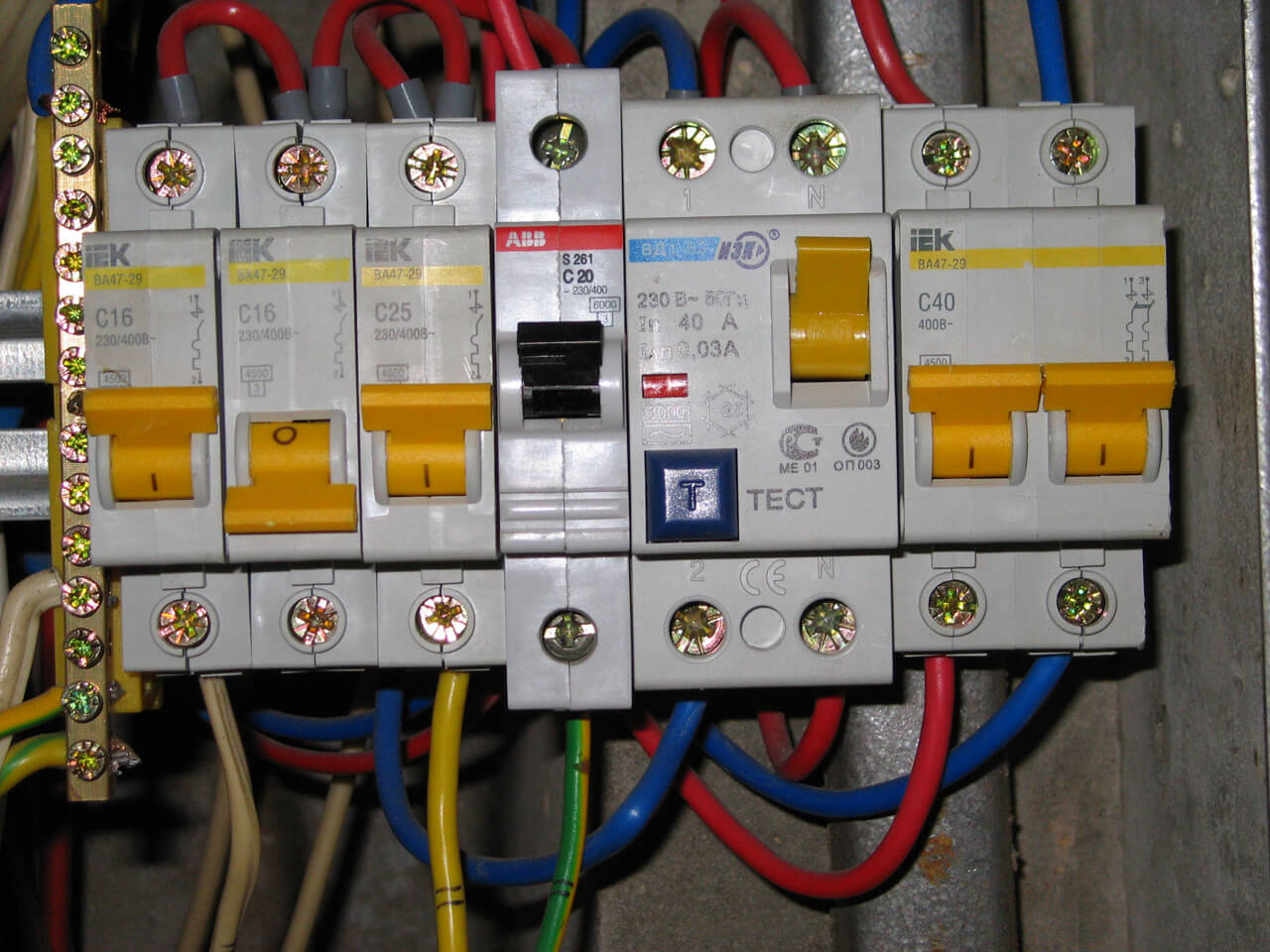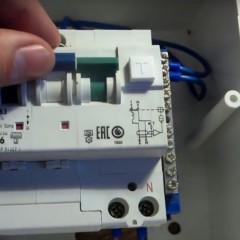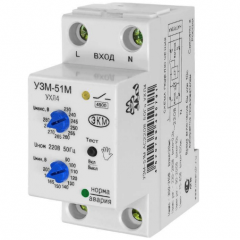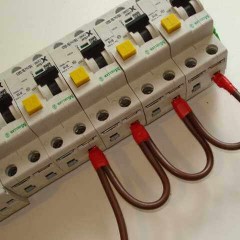What is an RCD and how does it work?
Appointment
First, consider what the purpose of the residual current device (in the photo below, you can see its appearance). Leakage current occurs in case of violation of the integrity of the insulation of the cable of one of the wiring lines or in case of damage to structural elements in a household electrical appliance. Leakage may result in fire wiring or an operated household appliance, as well as electric shock during operation of a damaged appliance or faulty electrical wiring.
In the event of an unwanted leak, an UZO disconnects a damaged part of the wiring or a damaged appliance in a split second, which protects people from electric shock and prevents the occurrence of a fire.
They often ask the question what is the difference between difavtomat and RCD. The difference of the first is that this protective device, in addition to protection against electrical leakage (RCD functions), additionally has protection against overload and short circuit, that is, performs the functions of a circuit breaker. The protective shutdown device does not have protection against overcurrents, therefore, in addition to it, circuit breakers are installed in electric networks to implement protection.
The device and principle of operation
Consider the design of the residual current circuit breaker and how it works. The main structural elements of the RCD are a differential transformer, which measures the leakage current, a starting element, which affects the shutdown mechanism and directly the mechanism for disconnecting the power contacts.
The principle of operation of the RCD in a single-phase network is as follows. The differential transformer of a single-phase protection device has three windings, one of which is connected to the neutral conductor, the second to the phase conductor, and the third serves to fix the differential current. The first and second windings are connected in such a way that the currents in them are opposite in direction. They are equal in the normal mode of operation of the electric network and induce magnetic fluxes in the transformer magnetic circuit, which are directed towards each other in the opposite direction. The total magnetic flux in this case is zero and, accordingly, there is no current in the third winding.
In the event of damage to the appliance and the appearance of phase voltage on its case, when it touches the metal case of the equipment, a person will be exposed to leakage of electricity, which will flow through his body to the ground or to other conductive elements that have different potential. In this case, the currents in the two windings of the RCD differential transformer will be different, and accordingly, magnetic fluxes of different magnitude will be induced in the magnetic circuit. In turn, the resulting magnetic flux will be non-zero and will induce in the third some current value - the so-called differential. If it reaches the threshold, then the device will work. The main reasons for the operation of the RCD we described in a separate article.
More information about how RCD works and what it consists of is described in the video tutorials:
Want to know how a residual current device works in a three-phase network? The principle of operation is similar to a single-phase apparatus. The same differential transformer, but it already compares not one, but three phases and a neutral wire. That is, in a three-phase protective device (3P + N) there are five windings - three windings of phase conductors, a neutral conductor winding and a secondary winding, through which a leak is detected.
In addition to the above structural elements, a mandatory element of the residual current circuit breaker is a test mechanism, which is a resistor connected via the “TEST” button to one of the windings of the differential transformer. When this button is pressed, the resistor is connected to the winding, which creates a differential current, and accordingly, it appears at the output of the secondary third winding and, in fact, an imitation of leakage occurs. The operation of the residual current device indicates its good condition.
Below is the RCD symbol in the diagram:
Application area
The residual current device is used to protect against current leaks in single-phase and three-phase electrical wiring for various purposes. In home electrical wiring An RCD must be installed without fail to protect the most dangerous household appliances in terms of electrical safety. Those electrical appliances, during operation of which there is contact with the metal parts of the body directly or through water or other objects. First of all, it is an electric oven, washing machine, water heater, dishwasher, etc.
Like any electrical device, an UZO can fail at any time, therefore, in addition to protecting the outgoing lines, you must install this unit at the input of the home wiring. In this case, the AVDT will not only reserve protective devices for individual wiring lines, but also perform a fire function, protecting all home wiring from fires.
That's all I wanted to tell you about the design, purpose and principle of operation of the RCD. We hope that the information provided has helped you figure out how this modular device looks and works, and what it is used for.
Surely you do not know:

